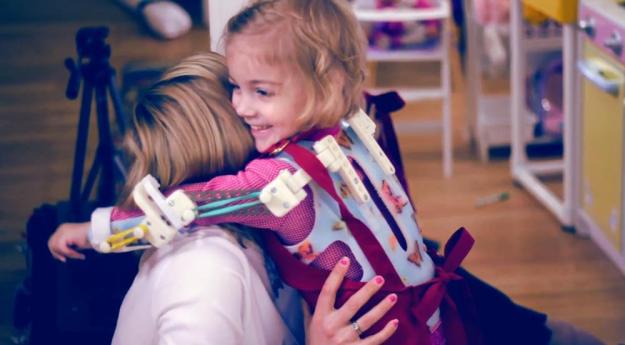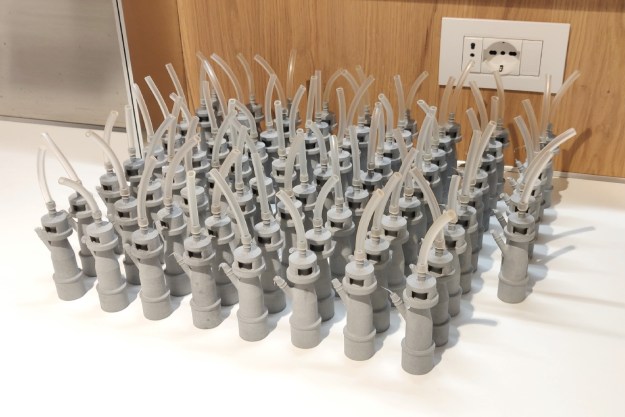
Detailed within a YouTube video, researchers at Nemours/Alfred I. duPont Hospital for Children developed a lightweight exoskeleton for a two-year old girl named Emma that was born with arthrogryposis multiplex congenita (AMC). The disease can cause joints to become permanently fixed in a single position. Prevalent in Emma’s arms, it was impossible for her to lift her own arms on her own in order to do something as simple as picking up a toy or even giving her mom or dad a big hug. After researching the disease, Emma’s parents attended a medical conference where they learned about the Wilmington Robotic Exoskeleton (WREX). Emma was able to try out a version of the WREX at the hospital, but she was too small for the bulky metal arms.

In addition, the researchers also developed a jacket that fits over Emma and the arms are fixed to that exoskeleton. This allowed Emma to have increased mobility in her home. She could finally use her arms to do things like color drawings or eat candy as well as simply having fun being a silly kid.
As Emma has grown up, she outgrew the first version of the exoskeleton. However, the 3D printer allows the researchers to input new specifications into a computer program and print larger parts as she grows older. It’s also handy for printing new sections of the exoskeleton when something happens to break. After Emma’s parents send the researchers a digital photograph of the broken piece, the newly printed piece can be dropped in the mail and delivered to Emma’s parents the next day.
When Emma’s parents tell Emma that they are putting on the WREX each day, Emma calls the device her “magic arms.” Researchers have used the design that they built for Emma and have created similar lightweight exoskeletons for other children.
Editors' Recommendations
- 3DMakerpro’s Seal is a pocket-sized scanner to make next-gen precision 3D prints
- Need a last-minute Halloween costume? Check out these 3D-printable getups
- The future of making stuff: Inside the evolution of 3D printing with Formlabs
- Father’s Day Gift Idea: These cheap 3D printers are on sale for less than $300
- The 50-year old Silicon Valley lab that practically invented modern computing


